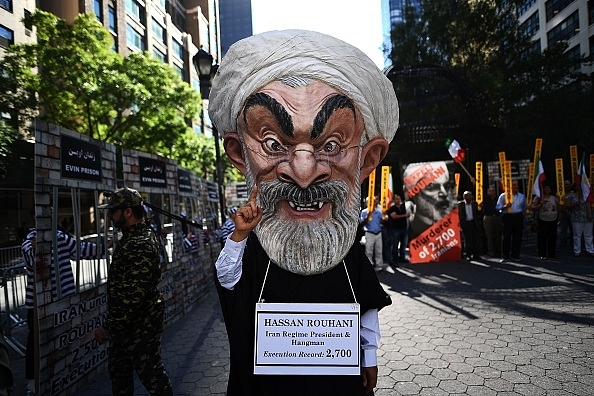
Iran’s ‘Relentless Expansionism’ Theory Is A Figment Of Imagination
The fear-mongering arguments about Iranian “expansionism” and an “imperial surge” are so lacking in evidence that they give panicked alarmism a bad name.
Robert Joseph and Ray Takeyh waste no time in misleading their readers:
One of the biggest foreign policy challenges facing the incoming Donald Trump’s administration could be countering Iran’s expansion throughout the Middle East.
Hawks thrive on exaggerating foreign threats, and one way to do that is to claim that an adversary is expansionist and/or imperialist. The assumption is that if the adversary is “expanding” its reach, the US is obliged to push back and prevent the said expansion. The trouble is that these claims of “expansion” are usually unfounded or extremely misleading. The reality is that there is no Iranian “expansion throughout the Middle East”. Indeed, one will look in vain for a real increase in Iran’s influence anywhere in the region over the last 10 years.
Iran obviously isn’t expanding in terms of territory. It isn’t staking out new claims anywhere, it isn’t annexing a portion of its neighbours’ territories, and it isn’t invading any of its neighbours. If the authors are referring to an expansion in influence, that is also mostly untrue. The countries where Iran has significant influence are those places where it either supports the local government and/or has proxies: Syria, Iraq, and Lebanon. The first two governments control less of their own territory than they did five years ago, and Iran has gone to some expense to shore them up. As a result of its support for the Syrian government, Iran has become more isolated in the region than it was before. In Lebanon, Iranian influence is not much greater than it has been in the past.
What about Yemen? The authors refer to Iran’s “military intervention” in Yemen, but there has been no such thing. As we know, the lie that Iran was on the verge of taking over Yemen is the Saudi-led coalition’s pretext for bombing and starving Yemen. The Houthis in Yemen aren’t Iranian proxies, they receive negligible support from Iran, and they have taken actions that Tehran specifically advised them not to take (eg, seizing the capital). Everywhere else, Iran’s influence is either non-existent or greatly diminished from what it was just a decade ago. Iran isn’t “expanding,” so there is nothing for the US to counter.
Iran’s “relentless expansionism” is not real, but it is very important to many Iran hawks that we believe that it is. It lends their demands for more aggressive measures a sense of urgency, and it makes it seem as if we are simply “responding” to their “aggression”. If they are “relentless,” that implies that they will keep going until someone (i.e., the US) stops them, which conjures up the idea that the entire region would somehow fall into their hands if nothing is done. Of course, Iran has neither the resources nor the means to achieve such regional dominance, and in any case it is outgunned by most of its neighbours. The authors’ fear-mongering argument about Iranian “expansionism” and an “imperial surge” are so lacking in evidence that they give panicked alarmism a bad name.
This piece was first published on The American Conservative and has been republished here with permission.